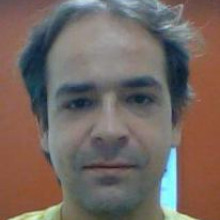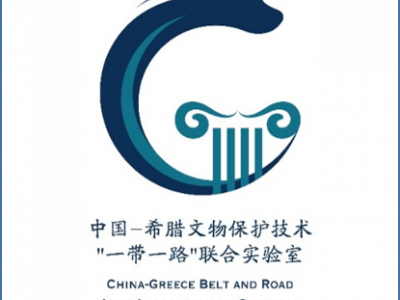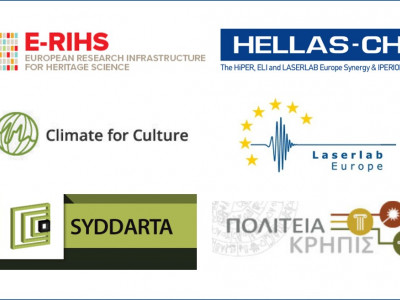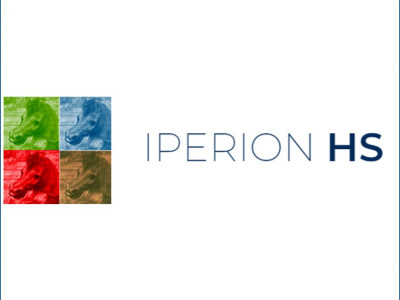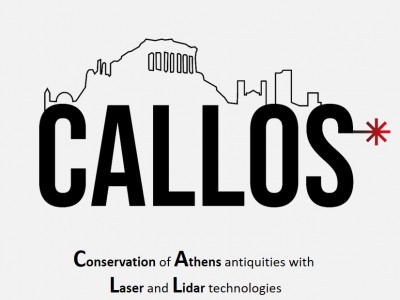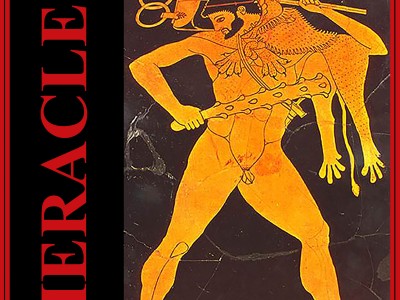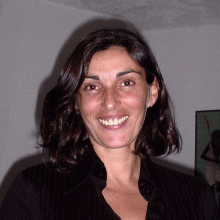
Studied Optical Holography at the Royal College Art in London (RCA, Royal) in the interdisciplinary department with the Imperial College of Science Technology Medicine (ICSTM, Imperial) and V&A Museum; with European and British scholarships. Master of Science at the National Technical University of Athens (NTUA) and PhD in Applied Science from the University of Sunderland, UK. She has been working since May 1996 as expert research staff at IESL /FORTH. She has brought to IESL the new structural diagnosis activity of Holography and Holographic Interferometry in Cultural heritage research and, through intensive personal work, soon developed with own competitively won funding the Applied Holography Metrology laboratory with which she claimed an active role in shaping new diagnostic technologies in investigation and control procedures in the documentation of movable and immovable CH with laser techniques. She has envisioned, networked, authored and competitively won major European projects that she has coordinated as project coordinator and also as co-coordinator /work package leader European projects from FP4-FP7. At the same time, she has won several international and European /Bilateral/ transnational R&D partnerships as well as Greek competing programs PAVET and PENED. She has been offering her services for years in EC as project evaluator. Author and co-author of scientific publications in journals, books, conference volumes, educational seminars, videos, CDs, etc. Scientific member of optical engineers and cultural scientific communities and organization committee member at international conferences
Education
- 2014, PhD, Applied Science, UoS, Univ. Sunderland, UK
- 2009, MSc, Chem. Eng. Material Science, NTUA, Univ. Athens, GR
- 1996, MPhil/DPhil, Conservation Science, RCA/ICSTM/V&A, Univ. London, UK
- 1992, PeD, Optical Holography, RCA, Univ. London, UK
- 1990, BSc, Optics, NTIA Univ. Athens, GR
Interests
- Optical Metrology
- Coherent Metrology
- Holography
- Interferometry
- Speckle Interferometry
- Laser interferometry
- Structural diagnosis
- Artworks
- Defect
- Cultural Heritage
Other
Main Activity
Establisher and head of Holography laboratory and project coordinator at IESL. Research activities range from Holography and Holographic Interferometry (HI) techniques and methodologies for the investigation of artworks; the applications of HINDT for detection, identification and evaluation of structural condition; HI as antifraud technology; physicomechanical deterioration mechanisms; environmental and transportation impact; laser ablation and photomechanical effects; optical prototype system design; experimental verification; on-field campaigns & methodology planning; innovation and research project development.
Funding
European Union
|
2016-20 |
E-RIHS, “The European Research Infrastructure for Heritage Science” (Horizon 2020-INFRADEV-2016-2, G. A. No739503, Local PI: D. Anglos (http://www.e-rihs.eu/) |
|
2015-18 |
LASERLAB-EUROPE IV, “Integrated European Laser Laboratories", H2020-INFRAIA-2014-15, Research and Innovation Action, Grant agreement No: 654148, Team Involvement: D. Anglos, P. Pouli, V. Tornari, G. Tserevelakis, K. Hatzigiannakis (https://www.laserlab-europe.eu/) |
|
2015-19 |
IPERION-CH, “Integrated Platform for the European Research Infrastructure ON Culture Heritage” (Horizon 2020 - INFRAIA-2014-2015, GA No 654028) Local PI: D. Anglos (http://www.iperionch.eu/) |
|
2009- 14 |
CHARISMA, “Cultural Heritage Advanced Research Infrastructures: Synergy for a Multidisciplinary Approach to Conservation/ Restoration” (INFRA-2008-1.1.1 Bottom-up approach-228330), Local PI: D. Anglos |
|
2011-14 |
SYDDARTA, “SYstem for Digitisation and Diagnosis in ART Applications” (FP7-ENV-2010-265151) Local PI: V. Tornari |
|
2009-13 |
CLIMATE FOR CULTURE, “Damage risk assessment, economic impact and mitigation strategies for sustainable preservation of cultural heritage in the times of climate change” (FP7-ENV-CP-226973) Local PI: V. Tornari (https://www.climateforculture.eu) |
|
2005-08 |
MultiEncode, “Multifunctional encoding system for assessment of movable Cultural Heritage” (SSPI-CT00-6427) Local PI: V. Tornari |
|
2003-06 |
LASERACT, “Laser multitask non-destructive technology in conservation diagnostic procedures” (ID: EVK4-CT-2002-00096) Local PI: V. Tornari (http://cordis.europa.eu/project/rcn/69585_en.html) |
|
2000-03 |
HOLOAUTHENTIC, “Holographic authenticity sensors” (G6RD-CT-1999-00145) Local PI: V. Tornari (https://cordis.europa.eu/project/rcn/51398/factsheet/en) |
|
1996-99 |
Laser ART, “Non-intrusive laser measurement techniques for diagnostics of the state of conservation of frescoes, paintings and wooden icons” (SMT4-CT96-2062 ) Local PI: V. Tornari |
National
|
2017-19 |
HELLAS-CH, “Synergy ELI - LASERLAB Europe, HiPER & E-RIHS.gr”, (MIS 5002735) Major project on the National Research Infrastructures Roadmap. Co-ordinator: Prof. D. Charalambidis (FORTH), Team involvement: P. Pouli, D. Anglos |
|
2003-06 |
OLOTEC, “Holographic method and system development for structural assessment of artworks” (GSRT) |
|
2003-04 |
“CULTURE 2000”, (CLT 2003-A11-RO-515) |
|
1995-98 |
LATECA “Laser technology in conservation of artworks” (GSRT ) |
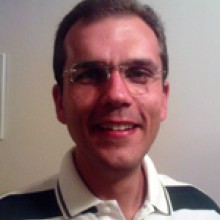
Career
- Now faculty member in University of Ioannina, Greece
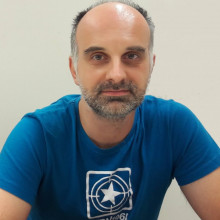
- Panagiotis Siozos (PhD in the field of interaction of strong laser pulses with molecules from Physics Department, University of Ioannina, Greece). He has research experience for over ten years in various research fields related to laser-physics and he is involved in a number of research projects having a significant number of publications and participation in conferences. Currently he is working at IESL-FORTH as research assistant. His research interests include the development and optimization of mobile instrumentation on laser and optical spectroscopic methods (i.e. LIBS, Raman and Diffuse Reflectance) with emphasis to the development of analytical methodologies for their broad implementation in the study and investigation of Cultural Heritage materials (i.e. automatic detection of chemical elements and characterisation of LIBS spectra etc.).
Education
- 2007, PhD, Molecular Physics, Univ. of Ioannina, Greece
- 1999, BSc, Physics , Univ. of Ioannina, Greece
Career
- 10/2008-today , Post-doctoral researcher, IESL-FORTH
- 2/2007 – 9/2008 Working in the R&D department of NIKI Information Technologies & Digital Engineering Ltd
Interests
- Laser based analysis of cultural heritage materials. Methodology and instrumentation
- Development of portable spectroscopic instruments
- Laser induced breakdown spectroscopy (LIBS)
- Raman micro-spectroscopy
- Pulsed laser systems, Spectroscopy and mass spectrometry detection systems
- Development of data acquisition and data analysis software
Awards/Prizes/Distinctions
- Qualified to the final stage of the competition “Greece Innovates: 2nd Competition for Applied Research & Innovation”, 2013, presented the LMNT II portable laser device for rapid and direct identification of chemical elements in solid materials. http://ww

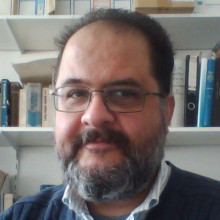
Petros Samartzis is currently a Principal Researcher at IESL-FORTH. He graduated from the Chemistry Department of the University of Crete in 1996 and received his Ph.D. in Physical Chemistry from the same Department in 2003, under the supervision of Theo Kitsopoulos . He carried out post-doctoral research in the USA, initially at the University of California Santa Barbara (2003-2007) under the supervision of Alec Wodtke and then at the California Institute of Technology-Caltech (2007-2009) under the supervision of A. Zewail (Nobel in Chemistry 1999). He returned to Greece and has been working at IESL-FORTH since 2010.
PS studies Chemistry using photons, preferably laser photons. His research interests range from the dynamics of excited molecular states and the structural and energetic monitoring of chemical reactivity to the spectroscopic detection of target molecules in complex chemical mixtures. Among other things, he has studied small molecule photolysis mechanisms, photolytic production of spin-polarized atomic hydrogen, spectroscopic detection and characterization of high energy density molecules, cluster photolysis mechanisms, excitation/relaxation processes in organic crystals and carbon nanotubes, interactions at high-energy molecular excited states and spectroscopic fossil fuel adulteration detection. Over the years he has used a variety of techniques (optical & laser spectroscopy, mass spectrometry, Velocity Mapping/Slice Imaging, Ultrafast Electron Diffraction), mass spectrometry) and tools (lasers, high vacuum, custom TOF mass spectrometers, position-sensitive detectors, custom-built electron diffractometers, optical spectrometers) which he aims to further develop and expand.
Education
- 2003, PhD., Chemistry Department, University of Crete, Greece
- 1996, BSc., Chemistry Department, University of Crete, Greece
Career
- 2019-today, Principal Researcher, IESL-FORTH, Greece
- 2015-2019, Assistant Researcher, IESL-FORTH, Greece
- 2010-2015, Contracted Researcher, IESL-FORTH, Greece
- 2007-2009, Postdoctoral Scholar, Chemistry & Chem. Engineering, California Institute of Technology (Caltech), USA
- 2003-2007, Postdoc, Chemistry Dpt., University of California, Santa Barbara (UCSB), USA
Interests
- Laser Chemistry
- Dynamics of excited molecules and reaction intermediates
- Structural Dynamics in chemical reactions
- Detection of target molecules in chemical mixtures
- Development of new techniques and instruments

Dr. Anthi Ranella is an Assistant Researcher at IESL-FORTH and leads the Tissue Engineering –Regenerative Medicine and Immuno-engineering Lab (TERMIM Lab). She received her received PhD in 2005 from the Department of Biology of University of Crete.
Her fields of interests comprise mainly the study of the basic biological and biophysical processes at the molecular and cellular level, the understanding of the physicochemical mechanisms that take place at the interface between cells and biomaterials in micro / nano scale and the examination of the potential medical and/or clinical applications of optimized artificial tissue scaffolds.
In the interdisciplinary area of her interest three post-doctoral research scientists, three PhD, two MSc and two undergraduate students, originated from different scientific fields, are employed. Her research activities have led to the granting of two patents, she has published 39 peer reviewed papers with more than 1200 citations (Scopus h index: 18), 4 chapters in international scientific books, while she serves as a reviewer in many peer-review journals.
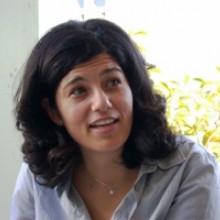
Paraskevi Pouli is a Senior Application Scientist at IESL-FORTH, Photonics for Heritage Science group, in charge of developing novel laser technologies for restoration of art and antiquities.
She holds a degree in Physics from Aristotle University of Thessaloniki, Greece and a Ph.D. in Physics from Loughborough University, UK. Her PhD thesis, entitled “Laser cleaning studies on stonework and polychromed surfaces”, was supervised by prof. D.C. Emmony.
She joined IESL-FORTH on 2000 with research interests focused on the investigation of laser ablation on CH materials and the development of laser-cleaning methodologies on real cases. The understanding of laser induced discoloration (yellowing of marble, blackening of pigments) and optimization and monitoring of cleaning process are her research priorities. She is involved in a number of EU (H2020 HERACLES, H2020 IPERION-CH, FP7-CHARISMA, FP5-PROMET, etc.) and nationally (KRIPIS - POLITEIA I and II, LASTOR, MOBILART, CRINNO II etc.) funded research projects.
Her research has been published in over 49 publications (4 invited) in peer reviewed journals and conference proceedings, reflecting in more than 700 citations (according to SCOPUS) while she has been presenting her work (8 invited) in major international conferences and workshops in the field. Since 2009 she is a member of the International scientific committee of the LACONA (Lasers in the Conservation of Artworks) Conference Series, while she has been also actively contributing in the organization of several other conferences.
Since 2012 she serves as technical manager of the “OPTO-CH” series of thematic training activities initiated by IESL-FORTH, which have attracted up to now more than 200 conservators-restorers and young scientists with the aim to get familiar with the use of Laser technologies in the analysis, diagnosis and conservation of CH assets. Over the past few years she is vigorously participating to EU and national initiatives on the development of E-RIHS (European Research Infrastructures for Heritage Science) and E-RIHS.gr Research Infrastructures focused in the field of Heritage Science.
Since 2001 she is responsible, on behalf of IESL-FORTH, for the laser-cleaning projects on the Athens Acropolis sculptures (i.e. the Parthenon West Frieze, the ceiling of the Erechtheion Prostasis, the Caryatids at the Acropolis Museum etc.). The outcome of this collaboration is a prototype laser system and a laser cleaning methodology customarily developed in order to ensure the removal of thick pollution accumulations in a controlled and safe way for both the object and the operator. In this context the Acropolis Museum and IESL-FORTH have been awarded the 2012 Keck Award by the International Institute for Conservation of Historic and Artistic Works (IIC) for their collaboration regarding the “laser rejuvenation of Caryatids opens to the public at the Acropolis Museum: A link between ancient and modern Greece” (http://www.iiconservation.org/node/3362).
Education
- 2000, PhD, Physics Department, Loughborough University, UK
- 1995, BSc, Physics Department, Aristotle University of Thessaloniki, Greece
Interests
- Investigation of laser ablation mechanisms & development of cleaning methodologies on a variety of Cultural Heritage challenges
- Understanding & prevention of side effects upon laser cleaning; i.e. yellowing of sensitive substrates & blackening of pigments.
- Optimization of the cleaning process using novel & prototype laser systems & methodologies & monitoring the cleaning intervention through spectral imaging, holographic interferometry & laser spectroscopy.
Awards/Prizes/Distinctions
- 2012 Keck award of IIC http://www.iiconservation.org/node/3362


Meropi Mari is a postdoctoral researcher in the Institute of Electronic Structure and Lasers (IESL). She has got a B.Sc. degree in Physics (2005) and a M.Sc. degree in Optoelectronics (2008) from the Physics Department of the University of Crete. She received her PhD degree from the University of Edinburgh (2014). She has published 9 refereed scientific articles in international journals, 4 papers in conference proceedings. She has recently got her own funding by the Hellenic Foundation for Research & Innovation in order to set up a Two-Photon Microscope for in vivo applications on mice.
Education
- 2014, Ph.D. in Biomedical Engineering, University of Edinburgh
- 2008, M.Sc. in Optoelectronics - Microelectronics, University of Crete
- 2005, B.Sc. in Physics, University of Crete
Interests
- non-linear imaging (Second and Third Harmonic Generation, Coherent Anti-Stokes Raman Scattering and Two Photon Excitation Fluorescence) at microscopic level applied on biologic specimens
- Thickness identification as well as in depth degradation assessment through THG and MPEF for Cultural Heritage studies
- Raman Spectroscopy on lipids & proteins
- Atomic Force Microscopy; lipid bilayers, interactions with proteins, changes of protein structure (annular & globular shape, fibril formation
- Tip-Enhanced Optical Microscopy optimization


